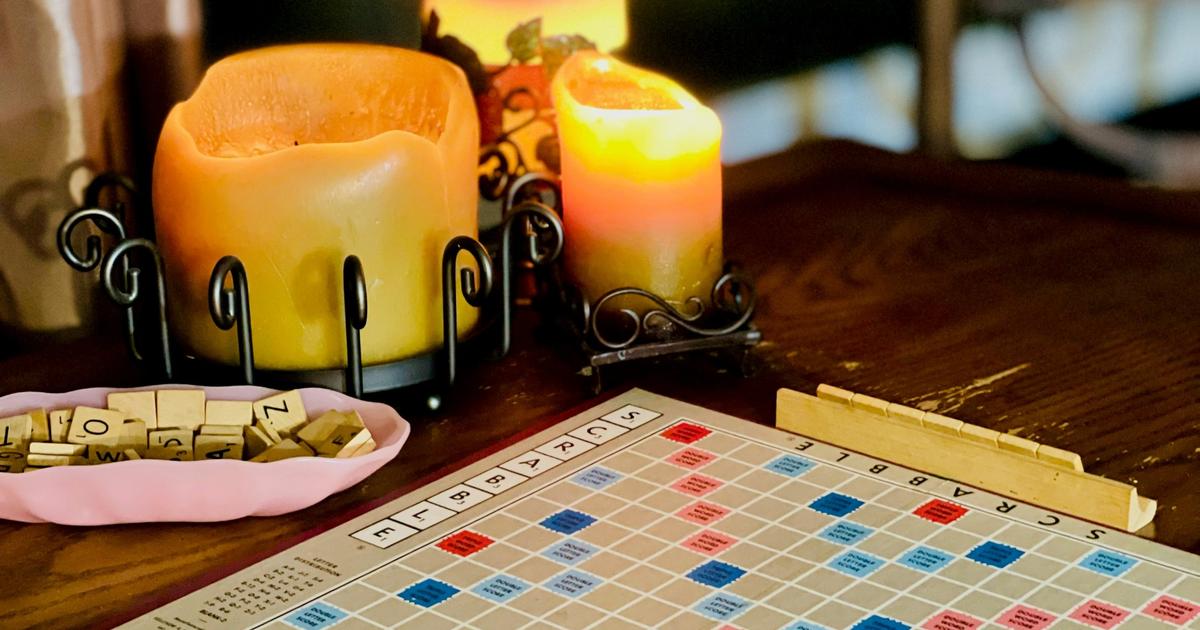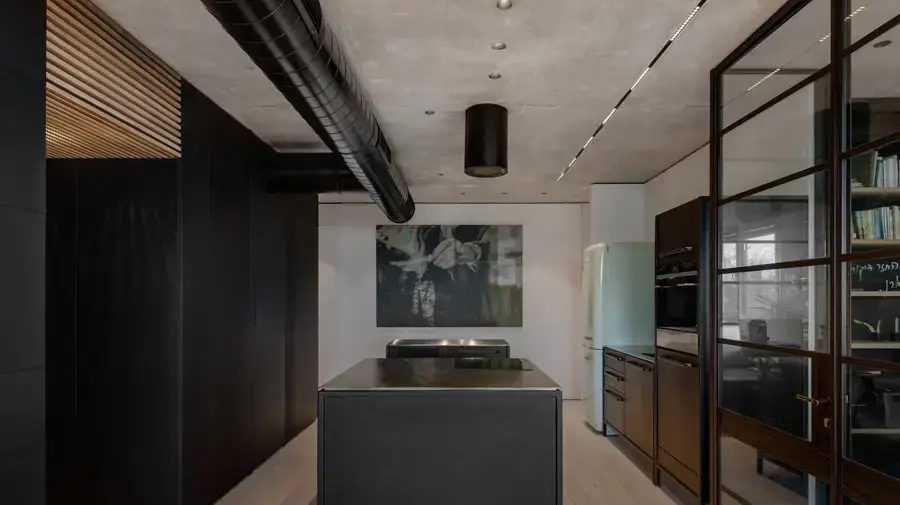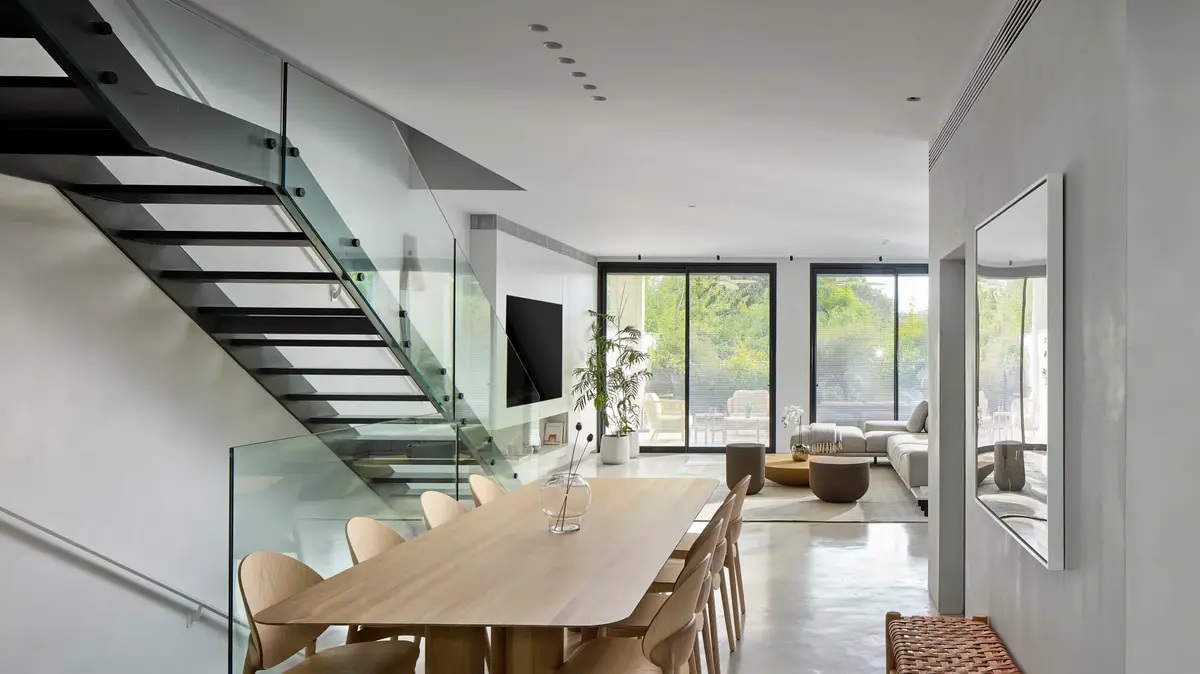In the war year of 1917, Margarete Lihotzky roamed Vienna's working-class district.
She wanted to submit a design for an architectural competition, but before she drew a line, the young woman from a middle-class family should first familiarize herself with the living conditions of the workers, her professor advised.
This gave the student an insight into overcrowded apartment buildings.
"It was not uncommon for eight or nine people to live in one room," she wrote in her memoirs. "I could hardly find a child who didn't have to share a bed with one or two siblings." Usually the kitchen was in the bedroom, the outhouse in the bedroom hallway.
Those who could stayed only to sleep and eat.
That's how about 90 percent of people lived in Vienna, often struggling with rent increases, subletting their dormitories to "bedgoers" during the day.
The socially critical Berlin draftsman Heinrich Zille wrote: "You can kill a person with an apartment just as much as with an axe." That's exactly what Lihotzky felt when he saw the misery and wanted to help alleviate it.
Enlarge image
»Frau Architect«: Margarete Schütte-Lihotzky around 1935
Photo:
Imagno / ullstein picture
As early as the 1920s she was developing inexpensive solutions, her designs for social housing and her first tiny houses appear unusually modern.
The star architect, who was born exactly 125 years ago, is known for the first fitted kitchen in the world: the Frankfurt kitchen from 1926. It is the archetype of kitchens as we know them to this day - compact, everything can be reached with a flick of the wrist, practical and time-saving .
The »mother of the fitted kitchen« label stuck with Margarete Schütte-Lihotzky.
"I'm not a kitchen," she said in her late years and felt reduced to it.
Because all her life she was a political activist, campaigning for social housing, women's rights and peace.
As a self-confessed communist, Schütte-Lihotzky went to the Soviet Union and risked her life under the Nazi regime because she was involved in the resistance.
Mini houses like in »Hansel and Gretel«
"She thought integratively early on and considered the needs of women, men and children equally," says architect Christine Zwingl, chairwoman of the Margarete Schütte-Lihotzky Club, which was founded in 2013.
Margarete Lihotzky was born on January 23, 1897 in Vienna and studied at the School of Applied Arts from 1915.
Immediately afterwards, her first big project, she designed mini houses for people on the outskirts of Vienna.
After the First World War, many families lived in makeshift huts, some of which were covered “with the tin of old condensate cans,” as Lihotzky noted.
Again she went to the settlements, studied the habits of the people, had them fill out questionnaires.
Enlarge image
Small but nice: Lihotzky's mini house from 1923
Photo: Art Collection and Archive, University of Applied Arts Vienna Inv.
No. 33/2/FW
Unlike many of today's luxurious tiny houses, their cottages were functional yet cozy.
With an eat-in kitchen and even an expandable second floor, they looked like the witch's house from "Hansel and Gretel" to the poet Elisabeth Janstein.
The trick: all the kits were standardized, could be mass-produced cheaply and could be adapted depending on the life situation.
Single people as well as families of six could move in.
Margarete Lihotzky's talent was noticed.
In 1925, the urban planner Ernst May invited her to work on a major project in Frankfurt, where 12,000 apartments were to be built within a few years.
Enthusiastic about the social approach, the 29-year-old with a bob haircut and wearing a white overall became the only woman to become part of what later became a famous team of architects.
»I had nothing to do with the kitchen and cooking«
"New building also requires new people" was a motto in Frankfurt and throughout Europe.
"It was about building a completely new society in the states that were monarchies until 1917 or 1918," explains historian Marcel Bois from the Research Center for Contemporary History in Hamburg.
Accordingly, investments have been made in architecture and in education.
However, the architect from the social-democratic “Red Vienna” was horrified when she noticed how apolitical her German colleagues were.
She was supposed to apply for leave for a demo on May 1st, and as a woman she was immediately declared a specialist in housekeeping and was supposed to plan a modern kitchen.
"I didn't do anything with the kitchen or cooking," she explained later.
»But the men around me pushed me to do this task.«
more on the subject
New living in the 1920s: how fitted kitchens and terraced houses became German success storiesBy Ulrike Knöfel
In the spring of 1926, no one suspected that the kitchen would be the greatest success of the Frankfurt project.
Margarete Lihotzky began to plan and orientated herself towards an elongated train kitchen, in which meals could be cooked for many people.
She measured every move with a stopwatch.
If the soup was cooked on the stove, you could iron on a fold-out board, wash dishes in two sinks and wash vegetables.
"She recognized care work as work," says Marcel Bois, who has been researching Margarete Schütte-Lihotzky for years.
"Women should be relieved of the kitchen and have more free time." That's what made the Frankfurt model so progressive in the 1920s.
From Germany to the Soviet Union
Some feminists later criticized Schütte-Lihotzky for "tiing the woman to the stove," according to Bois.
»Because the dining area has been outsourced.
This made the kitchen the place for women.« But the architect objected and said in an interview in 1999 that she had planned the kitchen for working women.
In 1926, planners called from all over the world and were interested in the Frankfurt kitchen. The French Minister of Labor alone wanted to have 260,000 units installed.
Despite the international success, Lihotzky felt misunderstood - she was primarily interested in social construction and was planning apartments for single women.
"You can't separate the work and her political stance," says Bois.
On Black Friday in October 1929, the world plunged into an economic crisis. Margarete had been married to Wilhelm Schütte since 1927 and was now called Schütte-Lihotzky. There were no more construction contracts for either of them in Germany. The architect couple went to the Soviet Union – she planned kindergartens there, he schools. They were not yet in the Communist Party, but they were open to Soviet ideas and saw the Nazis coming to power from afar in 1933.
But the political situation in the Soviet Union also came to a head: in the course of the "Great Terror" at the end of the 1930s, dictator Josef Stalin had over 1.5 million people deported to the gulags, and many died.
The couple fled the country, first via Paris to London.
But it was only in Istanbul that they found work and from August 1938 they built schools and a column for the Turkish President Atatürk together.
Joining the KPÖ “because of Adolf Hitler”
Meanwhile, communist resistance groups against the Nazi regime were organized in their homeland.
Istanbul became important for the Austrian Communist Party (KPÖ), where officials exchanged information and sent secret couriers to the Nazi Reich.
Margarete Schütte-Lihotzky took part in meetings and decided to actively resist.
In 1939 she joined the KPÖ, "because of Adolf Hitler," as she later put it.
On Christmas Eve 1940 she left for Vienna on the Orient Express and hid a cigarette paper with information scrawled on it in her ear.
Wilhelm Schütte had no idea what danger his wife was putting her life in and believed that she was only visiting her sister.
In truth, she was supposed to persuade the leading Viennese communist, Erwin Puschmann, to leave the country.
As a secret courier, she was "only allowed to have contact with two people at a time" and was not allowed to go from one apartment to a meeting place "without first having to make detours through secluded parks or alleys."
Margarete Schütte-Lihotzky adhered to this.
But an informer was the group's undoing: »Ossi«, with whom she often exchanged information in the café, was actually called Kurt Koppel and had worked for the Gestapo for years.
A series of death sentences
On January 22, 1941, the day before Margarete Schütte-Lihotzky was scheduled to leave, she and Puschmann were arrested.
In the women's wing of Vienna's district prison on Schiffamtsgasse, the political prisoners communicated from their solitary cells by knocking, communicated about interrogations and celebrated Labor Day on May 1st.
A guard helped them smuggle secrets.
"Margarete was supported in prison by her husband's loving letters," says historian Thomas Flierl, who evaluated 126 of the couple's letters.
It shows how skilfully Wilhelm Schütte acted, announcing and getting her a permanent position in Istanbul – knowing that the Nazis were reading along.
"I felt humanly superior to these people," Margarete Schütte-Lihotzky later wrote about the Nazi perpetrators.
The Berlin People's Court tried 25 communists, and 19 were sentenced to death.
Many had to wait in their cells for months to be shot or beheaded.
Erwin Puschmann was also executed.
When the verdict was pronounced in September 1942, Schütte-Lihotzky appeared with a clean blouse and his hair pinned up.
"The verdict was not announced until a quarter past eight in the evening," she wrote to her relatives. "Until then I believed I was dead." But things turned out differently.
The verdict was 15 years in prison.
»To erect a monument to your comrades-in-arms«
"Can you imagine what it's like?" she asked in the same letter - she had escaped what seemed to be certain death and later said she only survived through the foreign policy considerations of the Nazi regime.
Because her husband got her an employment contract in the Turkish civil service, which was available at the start of the process.
How important the paper really was in the process remained unclear.
By the end of the war, the now 48-year-old had lost a little more than 40 kilograms and had seen how many of her companions were tortured and murdered.
"As a survivor, she saw it as her duty to report on the resistance and to erect a memorial to those who were executed, especially to her comrades-in-arms," says Flierl.
But in post-war Vienna, Margarete Schütte-Lihotzky was publicly shunned and received no construction contracts because she was a communist.
In the early 1950s, his marriage to Wilhelm Schütte broke up.
She began to get involved in the peace and women's movements, gave lectures and encouraged young female architects.
Christine Zwingl met her in the 1980s and describes her as self-confident and charismatic: »One of the few who wasn't burdened by the Nazi era.
She was able to look back and tell us a lot about the architecture and history of the 20th century.
That was very rare in post-war Vienna.«
Enlarge image
Margarete Schütte-Lihotzky (1997): Charismatic witness of the century
Photo: Ronald Zak/AP
Schütte-Lihotzky stuck to her political ideals and never left the KPÖ, not even after the fall of the Soviet Union in 1991. She only distanced herself from authoritarian tendencies in the Communist Party in private, which makes her a controversial figure in Austria to this day.
When the architect died in 2000, at the ripe old age of 103, she left behind a century of memories.
She had experienced both the monarchy and the first European republics, fascism, the post-war period, the fall of the wall.
As an old woman, Margarete Schütte-Lihotzky looked back on her life and wrote: »If I had to vote again, I would become an architect again.«









